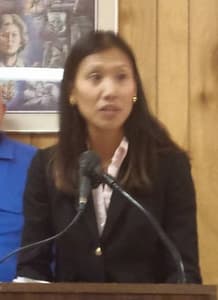Affordability – it is expensive to live here!
During last night’s Community Issues Forum, I had the opportunity to ask myself a question that was not asked. I asked myself, “What is an issue we’re not paying enough attention to?”
I believe that issue is AFFORDABILITY. Why does that matter, and what can we do about it?
We spend so much time debating over whether to build new development – the data has shown that is not where school growth has come from – we can’t prevent natural generational turnover from happening and can’t put up gates around our city and prevent families from moving in. And we can’t be pitting apartment and condo dwellers against single family homes.
The real issue that we are ignoring is that we are on the brink of an affordability crisis and pricing out economic diversity in the Little City. We are starting to be caught in a spiral of increased taxes and increased school enrollment. As taxes rise and cost of living increases and our property values continue to reflect a premium compared to our neighbors, empty nesters who don’t have a reason to stay anymore move out. And with our school reputation, inevitably that house gets re-developed and a family with kids move in. As more families with kids move into single family homes and neighborhoods, that further continues the spiral of rising school enrollment and costs and needing to further raise taxes which currently disproportionately affects homeowners. And so it spirals.
Keeping the City of Falls Church affordable not only means a more livable city day-to-day for us, but it also helps attract business and employers when they see a diverse city that can support new businesses. I believe it’s important to have economic, workforce, and generational diversity in our city to keep it vibrant and sustainable.
I believe we can do a few things to stem the problem and make this a more affordable place to live for everyone:
- Help retirees and those on fixed incomes who want to stay where they put down roots – we need to look at ensuring our tax relief programs are working for a growing baby boomer and retiree population. If not, we should consider expanding eligibility or consider new criteria beyond income.
- Maintain a diverse range of housing types, including smaller units, which generally are more affordable.
- Ensure there are appropriate number of affordable dwelling units (ADUs) in every new development – re-look at current income limits – even when a new development meets the 6% criteria, our median income here is very high and we may need to address that formula. Affordable and workforce housing attracts young professionals, keeps older residents who want to retire here, and helps teachers, small business owners, and City employees to afford to live where they work – really embodying the spirit of “live, work, play” communities of smart growth.
- Continue with responsible economic growth to diversify tax base, which lessens the burden on homeowners. Again, based on data – student growth originates from existing housing stock we cannot control – even if we stop all future mixed use development, we will have more kids in the system and we will have capital needs, so continuing with smart, economic growth via thoughtful planning will contribute revenue and keep our taxes as low as possible.
- Ensure high quality of life with more vibrant, walkable neighborhoods, investments in our parks, green space, and more local dining and retail options that all can enjoy. Let’s give everyone a reason to live here, beyond the schools.
I would love to hear your thoughts. Is affordability an issue here? What ideas do you have? Email me at lettyhardifcc@gmail.com!
